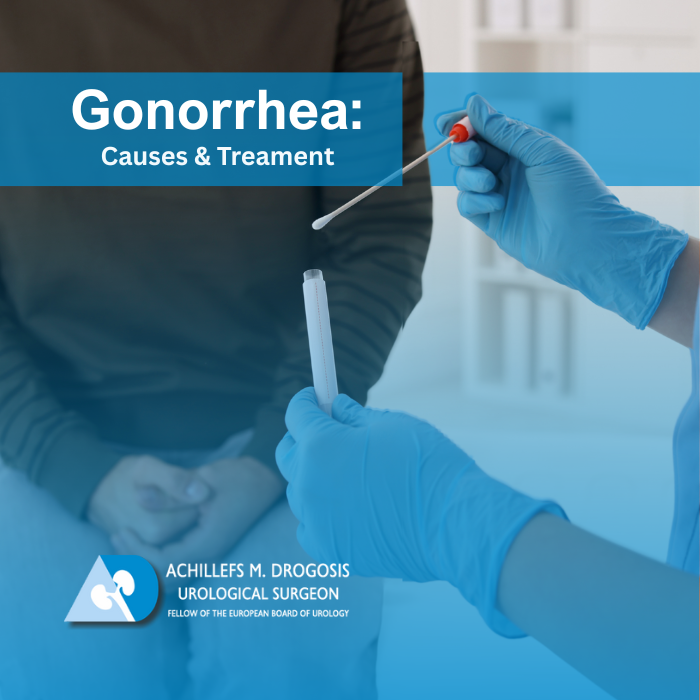Female incontinence: effective treatment with a laparoscopic Burch procedure
Urinary incontinence, the loss of bladder control, is a very common problem that negatively impacts the quality of life of many women, especially following childbirth or menopause. It is characterised by leaks of urine, particularly due to exertion from things like coughing, laughing, exercising or lifting weights. Although pelvic floor exercises and lifestyle modifications can help in the early stages, in some cases surgical repair may be needed.
One of the most well-known and effective surgical options is the laparoscopic Burch procedure which can provide reliable long-term relief from the symptoms of female incontinence. This procedure is designed so as to give support to the urethra and in this way help to prevent urine from leaking.
Causes of female incontinence
Female incontinence can be caused by a number of factors, including:
- Natural childbirth. Vaginal delivery can leave the pelvic floor muscles weakened.
- Obesity. The bladder and surrounding muscles may be weakened as a result of coming under pressure from excess body weight.
- Changes with age. As muscles age, the bladder may no longer have as much capacity to hold urine.
- Menopause. Owing to the reduced levels of oestrogen after menopause, there may be deterioration in the tissues lining the bladder and urethra.
- Chronic constipation. Because the anus (bottom) shares a lot of the same nerves with the bladder, compacted stool (poo) in the anus can lead to the over-activation of these nerves and urinary incontinence.
- Chronic cough. As with other conditions that increase pressure inside the tummy, a chronic cough (one lasting eight weeks or more) can cause urinary incontinence in women.
- Neurological disorders. Conditions that affect the brain and spinal cord, such as multiple sclerosis, Parkinson’s disease or a stroke can interfere with nerve signals involved in bladder control, leading to urinary incontinence.
- Pelvic surgery. Women can often suffer incontinence after pelvic procedures such as hysterectomy and pelvic organ prolapse repair.
Diagnosis and clinical assessment
Correct diagnosis is the first and most important step in successfully treating female incontinence. The doctor will take a complete medical history and then perform a gynecological examination. He will also, if necessary, recommend specialised tests such as a urodynamic test, ultrasound or cystoscopy. These tests help determine the type of incontinence (for example effort incontinence or stress incontinence) and guide the planning of appropriate treatment.
What is a laparoscopic Burch procedure?
The Burch procedur is a method that was developed in order to support the urethra. Basically the surgeon uses stitches (sutures) to steady the neck of the bladder near the pelvic bone, restoring the continence mechanism.
With the laparoscopic (keyhole) approach, the same procedure takes place through small cuts and it makes use of a special tummy camera (laparoscope) and surgical instruments. The surgeon sees an image on a high-definition screen which allows him to perform very precisely controlled movements and procedures without the need for a large cut in the lower abdomen.
What are the advantages of the laparoscopic Burch procedure?
The laparoscopic procedure is today one of the most reliable options available for treating incontinence in women. It has very high rates of success and of long-term patient satisfaction. The key advantages that the laparoscopic Burch procedure offers when compared to the open (non-laparoscopic) procedure include:
- Significantly less blood loss
- Shorter hospital stay (1–2 days)
- Reduced pain after surgery
- Fewer infections and side effects
- Complete recovery within 4–6 weeks
- May be combined with other laparoscopic procedures if necessary

The Burch technique is ideal for women with pure stress urinary incontinence without any complicating symptoms from a hyperactive bladder. Although surgically positioned tape (TVT or TOT) is also popular as a treatment, the Burch procedure is the better option in cases where it is preferable to avoid introducing ‘foreign’ materials into our body or where implants are contraindicated. It is also seen as a more suitable option for younger women planning pregnancy, as there is a smaller risk of complications in future births.
What can I expect after the operation?
Recovery following the operation will normally be a straightforward process. Your stay in hospital will usually be 1–2 days. Most women are able to return to light activities within a few days, while complete recovery will take 4–6 weeks. You are advised to avoid strenuous activities and sexual contact for about one month.
Even though it is a procedure with a high success rate, it is important to be aware of the potential complications. These can include initial difficulty in passing urine, urinating and urgency of passing urine. There may also be recurrence of incontinence over time, but this is something which occurs in less than 10% of cases on average.
Is female incontinence preventable?
While is it not always possible to prevent female incontinence, there are things you can do to help lower your risk of having this condition. Some useful strategies are
- Pelvic floor exercises (Kegel exercises)
- Maintaining a healthy weight
- Avoiding too much caffeine
- Appropriate management of constipation
Female urinary incontinence need not be an inevitable part of ageing. It can now be treated effectively with correct diagnosis and appropriate therapy. The laparoscopic Burch procedure is a state-of-the-art surgical option that is both safe and reliable, with proven long-term effectiveness.
If you are experiencing symptoms of urinary incontinence, don’t hesitate to consult a specialist urological surgeon. The new techniques now available can offer many people suffering from this common condition a significant improvement in their quality of life.
If you have any questions regarding gonorrhea, contact us and book your appointment.

